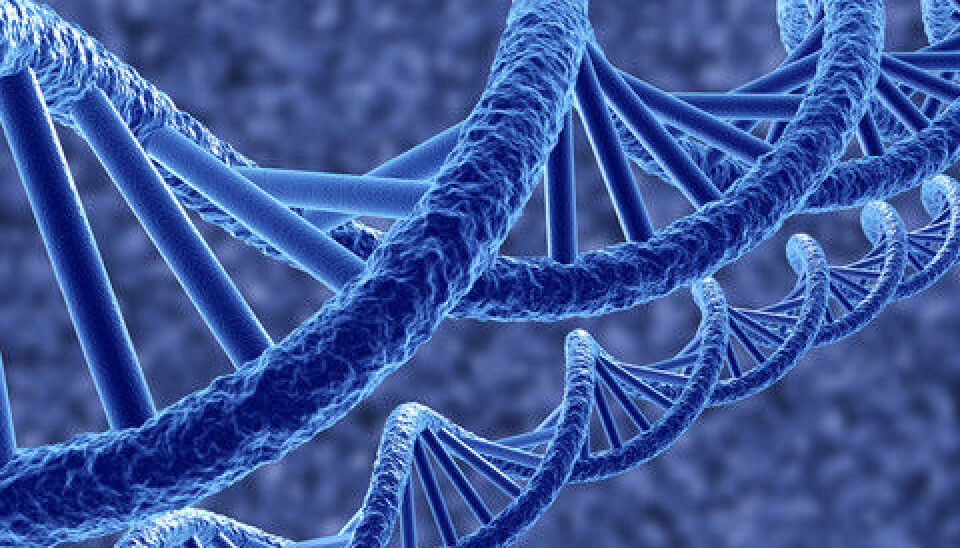
Huge study finds 60 genetic causes of cancer
More than 60 parts of the genome can increase a person’s risk of cancer of the breast, prostate and ovaries, according to the largest ever genetic study.
Imagine a world in which a simple blood test can reveal your genetic risk of developing cancer. A world where your doctor can look at a chart of your genes and tell you exactly which cancers you are at risk of developing and how you can avoid developing these diseases.
It sounds like science fiction. But such a world may actually become reality thanks to a huge international study, which over the past few years has been on the lookout for genetic variants that can trigger cancer of the breast, the ovaries or the prostate.
The research groups, which include two Danish researchers, found a total of 60 positions in the genome that are involved in the development of cancer.
What they have found is basically ’the holy grail’ in cancer research. It has long been known that a significant share of all cancers are caused by genetic variants, but scientists have so far managed to identify very few of these variants.
Thanks to this huge study we now know so many positions in the genome associated with cancer risk that it would be possible to offer screenings to everyone in their private doctor’s clinic so they can have their risk of developing one or more of these three cancers assessed.
Blood samples from 200,000 people
The international study is based on blood samples collected from 200,000 people. Half of these samples came from patients who suffered from breast cancer, ovarian cancer or prostate cancer, while the other half came from healthy people.
By comparing the cancer patients’ genes with those from the healthy participants, the researchers were able to track in on those genetic variants that increase the risk of cancer. For each participant, the researchers have analysed 200,000 genetic variants.
The genetic variants that the researchers were looking for have been termed ’single nucleotide polymorphisms’. Individually, these variants have only a minuscule effect on cancer risk. But collectively they play a key role. The more genetic variants a person has, the greater the risk of developing cancer.
Many of the genetic variants were found in areas of the genome that control the behaviour of certain genes. Mutations in these genes can e.g. destroy the built-in brake which prevents the cells from growing out of control. When this brake is defective, various forms of cancer spread throughout the body.
Thirteen articles published simultaneously
Not only is this the largest genetic study ever; the subprojects have also led to separate breakthroughs, which have now been published in a number of the world’s leading science journals. No less than 13 articles were published simultaneously yesterday, of which five were published in the journal Nature Genetics (NG) and three in PLOS Genetics (PLOSG).
The Danish subproject was headed by Stig E. Bojesen, MD, DMSc, of the Department of Clinical Biochemistry at Herlev Hospital.
Preliminary findings include:
- 42 new genetic variants that increase the risk of breast cancer. This more than doubles the number of known areas that play a part in the development of breast cancer. Some of these defects were found in areas that have previously been linked to other forms of cancer, which could indicate that they share some underlying methods that can bring about cancer. (NG)
- Four genetic variants that increased the risk of ovarian cancer. (NG)
- 23 genetic variants for prostate cancer. The total number of known ‘spelling errors’ that are said to increase the risk has now reached 76. (NG)
- Three regions of the TERT gene, which is associated with a risk of various cancers and with the length of the tips at the ends of our chromosomes, known as telomeres. The surprise here was that the diseases and the change in the telomere length were caused by different variants. One region determined telomere length exclusively and did not increase the risk of breast or ovarian cancer. Another region increased the risk of both these cancers, but did not affect the telomere length. The third region of the TERT gene changed the telomere length and increased the risk of breast cancer only (the Danish subproject). (NG)
- Genetic variants which only occurred in a special type of aggressive breast cancer called ‘estrogen receptor negative’. This discovery shows that this special type of breast cancer develops in a different way than the others, which opens up for new perspectives in individualised therapy. (NG)
- Women who carry the BCRA-1 gene and thus have a greatly increased risk of developing breast cancer during their lifetime typically also have another faulty gene which further increases the risk of breast cancer. This discovery also makes it possible to fine-tune the BCRA 1-carrier’s risk of developing breast cancer. (PLOSG)
- Women who carry the BCRA 2 gene also carry another mutation that increases the risk of breast cancer. This discovery also makes it possible to fine-tune the BCRA 2-carrier’s risk of developing breast cancer. (PLOSG)
- Hormones given to women during menopause were found to affect women’s risk of developing breast cancer differently. Some women have a greatly increased risk while others do not. Up to now it has been believed that hormones generally increase the risk of cancer. (PLOSG)
- Different parts of the genome communicate with one another. If this internal communication goes haywire, this in itself can increase the risk of cancer. (American Journal of Human Genetics).
Also published yesterday were articles about the TERT gene as a prostate cancer gene (Human Molecular Genetics), about breast cancer genes in Asian women (Human Molecular Genetics), plus two articles in Nature Communications about new genes for ovarian cancer.
----------------------------
Read the Danish version of this article at videnskab.dk
Translated by: Dann Vinther







